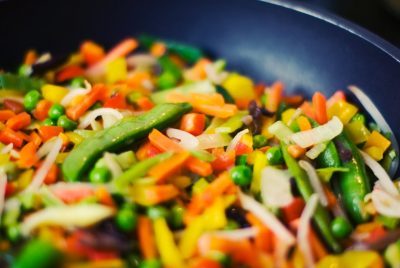Getting Ready for Gains: How to Set Yourself Up for Maximum Muscle During Bulk Season
We’re full-on into summer now, and if you’re a bodybuilder or even just a dedicated gym rat, chances are you’re dieting to get to your leanest point of the year. Better yet, maybe you’re already there, maintaining that lean condition as you enjoy the warm weather. Either way, though, you’re probably planning on bulking back up in the fall and water – and you should be! The colder months are the perfect time to grow, and unless you’re already very advanced, you need to spend at least half the year focusing on size and strength.
That doesn’t mean you should go straight from your summer cut into a full-on winter bulk, though! That’ll work, sure, but if really want to maximize your muscle gains and minimize the fat, you’ll set yourself with a few weeks of extreme dieting and training before you kick off that gaining phase. Here are a few of my top tips for strategically transitioning into bulking season!
Start Lean!

This is a no-brainer if you’ve already gotten six-pack lean for the summer, but unfortunately, some guys just never make that final push to get to 10 percent body fat or lower. Some will just yo-yo between short bulking and cutting phases all year, never making any steady gains in either direction. Others are great at putting on size, but they just can’t get it together when it comes to dieting. And still others take their sweet time with their diets, eating far too many cheat meals and not maintaining a large enough calorie deficit to strip the fat off at a decent rate.
Am I saying you should crash diet to get lean as fast as possible? Hell no! As a natural trainee, that’s a surefire way to lose muscle, feel like crap and eventually blow right back up to where you started. What I am saying is that we’re a third of the way through summer, and if you want to make great gains in the fall and winter without looking like a slob, you need to get your ass in gear now! If you’re not already as lean as you’d want to be for the beach or the pool, get your head on straight with your diet. The specifics are a topic for another article, but the number one priority is to maintain a deficit of about 500 calories per day, maybe a little more if you’re still straight-up chubby. If you’re not lean come September, your body won’t be primed to build muscle, and you’re not going to be happy with how you look as you gain weight.
The Pre-Bulk Mini-Diet

Now I know I said NOT to crash diet, but I do advise a super-strict “mini-diet” for the four weeks before you begin to bulk. Being lean already puts your body at an advantage when it comes to building muscle instead of fat, and maintaining a strict calorie deficit with a near-perfect diet will just amplify that effect. Even if you’re already maintaining your ideal condition, you’ll want to implement this four-week phase.
What’s this diet going to look like? You could simply lower calories around 10-15% compared to your normal cutting diet, and while that will work for some, it’s not my favorite approach. I’d rather see you raise your protein intake while dropping your carbs, keeping “total” calories basically the same as before. Because protein takes so much energy to digest, you’ll actually end up eating fewer NET calories, plus you’ll turn your body into a high-octane, fuel-burning machine!
So, replace roughly 50% of the calories currently coming from carbs with more protein. This may sink your carb intake pretty low depending on where you’re already at, but going low-carb for a few weeks will increase your insulin sensitivity and make your body better at using them during your bulk.
Overtraining on Purpose?

The term “overtraining” gets tossed around far too much these days. For the VAST majority of trainees, there is no overtraining, there is simply under-eating and under-sleeping. A bad week of training or feeling tired for a few sessions in a row does NOT mean you are overtrained, either!
However, you can – and sometimes should – overREACH. Overreaching is a big part of intelligently planned programs, and it basically involves short periods of purposefully exceeding your capacity to recover, so you can “rebound” and realize huge gains once you return to a more normal training volume.
You don’t need to make drastic changes to your current program, either – you’re just going to do more of what you’re already doing. Whether you’re training a body part split, upper-lower, push – pull – legs, or even full body, just add an extra day of training per week. This won’t be a completely different training day from the ones you’re already doing – you’ll just be going through your normal rotation more quickly. So, if you normally alternate upper body and lower body for four total sessions per week, for example, you’ll now be squeezing a couple of those sessions closer together and then starting your rotation over again before the week is through.
You’ll also be adding some extra volume to your program, about 20 percent. This just means you’ll do 20 percent more sets per movement (work sets, warm-ups don’t count), and you should strive to keep the weights and reps about the same as normal. Again, this works for basically any program as long as you’ve been consistent with your volume and frequency up until now. If you HAVEN’T been consistent with your exercises, weights, reps, sets and progression, then you need to master those basics before you worry about this program!
You’ll be doing your increased volume and frequency at the same time as your mini-diet – four weeks. This may not sound too bad on paper, but the combination of lower carbs and extra work in the gym will have you feeling pretty run-down by the end of this process, and you may even lose some strength. Don’t worry, it’s completely temporary!
Once those four weeks are done, you’ll be ready to start your bulking diet. You’ll get more carbs, fats and overall calories, and you won’t be purposefully exceeding your capacity to recover. In fact, I’d recommend that you cut your normal training volume BACK by about 20 percent during the first couple of weeks of your bulk, and gradually add sets back in. You’ll find that with the extra food and lower workload, your strength will shoot back up and then some, and your body will be primed to handle more work and build more muscle in the long run!











